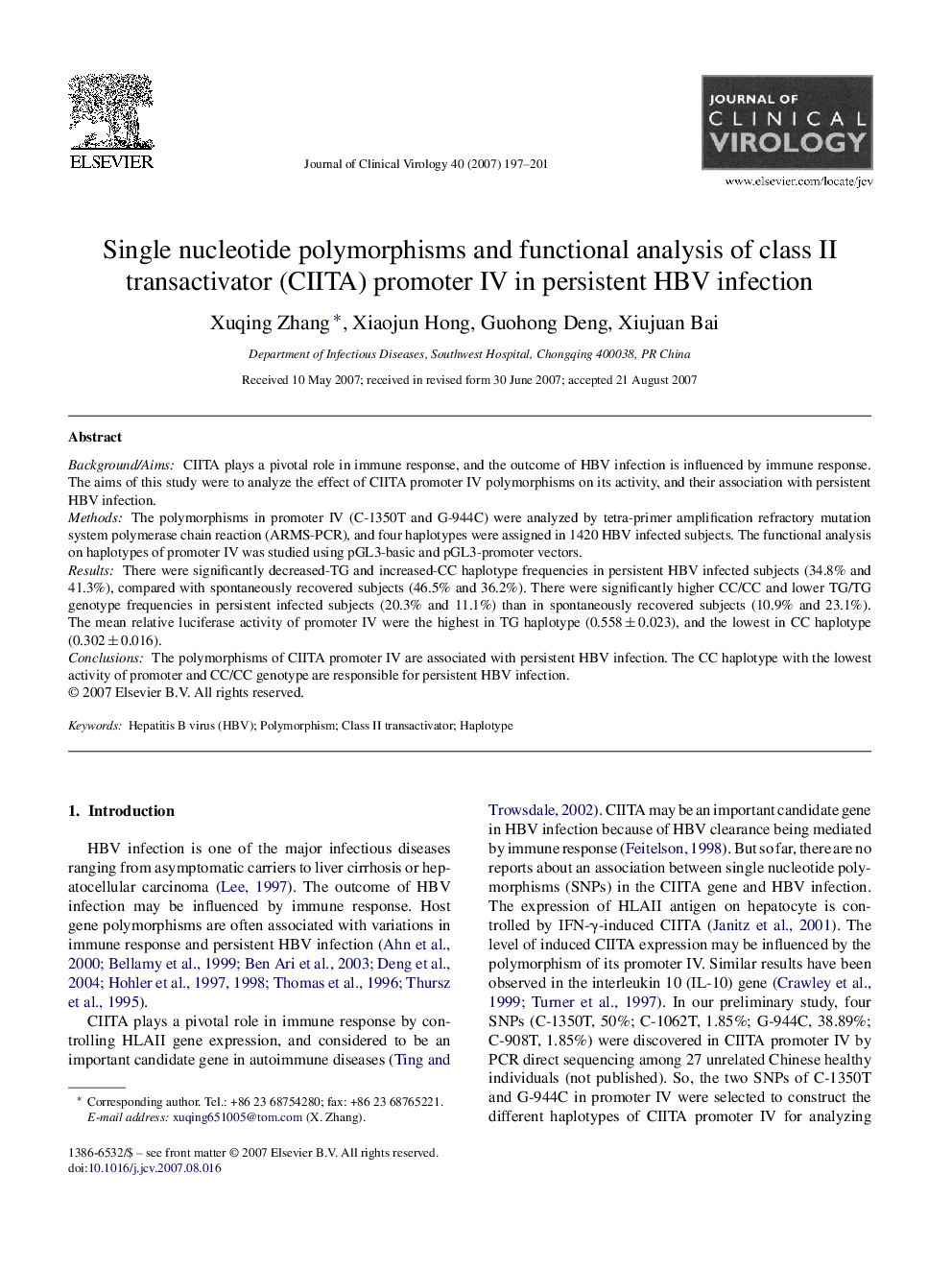| Article ID | Journal | Published Year | Pages | File Type |
|---|---|---|---|---|
| 3370765 | Journal of Clinical Virology | 2007 | 5 Pages |
Background/AimsCIITA plays a pivotal role in immune response, and the outcome of HBV infection is influenced by immune response. The aims of this study were to analyze the effect of CIITA promoter IV polymorphisms on its activity, and their association with persistent HBV infection.MethodsThe polymorphisms in promoter IV (C-1350T and G-944C) were analyzed by tetra-primer amplification refractory mutation system polymerase chain reaction (ARMS-PCR), and four haplotypes were assigned in 1420 HBV infected subjects. The functional analysis on haplotypes of promoter IV was studied using pGL3-basic and pGL3-promoter vectors.ResultsThere were significantly decreased-TG and increased-CC haplotype frequencies in persistent HBV infected subjects (34.8% and 41.3%), compared with spontaneously recovered subjects (46.5% and 36.2%). There were significantly higher CC/CC and lower TG/TG genotype frequencies in persistent infected subjects (20.3% and 11.1%) than in spontaneously recovered subjects (10.9% and 23.1%). The mean relative luciferase activity of promoter IV were the highest in TG haplotype (0.558 ± 0.023), and the lowest in CC haplotype (0.302 ± 0.016).ConclusionsThe polymorphisms of CIITA promoter IV are associated with persistent HBV infection. The CC haplotype with the lowest activity of promoter and CC/CC genotype are responsible for persistent HBV infection.
